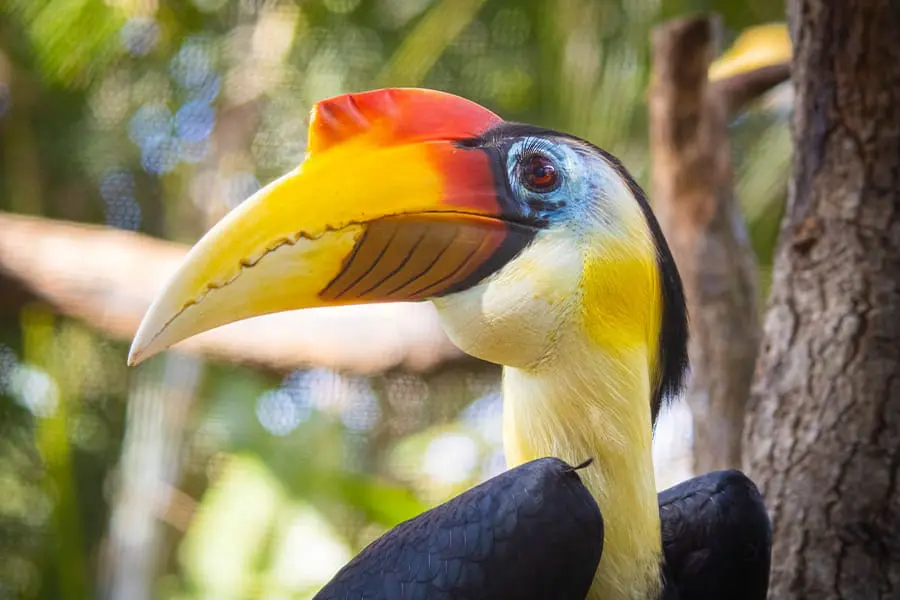

Gomez is a proud papa many times over.
While they don’t command as much attention from most guests as the giraffe, big cats or monkeys, two of the most important animals at the Zoo are Morticia and Gomez—a pair of wrinkled hornbills.
Both birds were wild-caught and imported to the United States as juveniles in 1993 and brought to a private facility in Plant City. It was there that they made the acquaintance of a part-time ranch hand by the name of Michelle Smurl, who was immediately drawn to the pair’s fascinating behavior and exotic beauty.
As Smurl’s career progressed in the years that followed, she moved on to the Zoo—first as a curator and then up to her current position as director of animal programs. In 2004, she was contacted by the hornbills’ owner and asked if the Zoo would be interested in acquiring the pair. Smurl jumped at the opportunity, and Morticia and Gomez flocked to the Zoo’s original Australasia aviary.
After a few years of no reproductive success, Smurl and her staff began to wonder if the pair would ever produce offspring in their new home. But that all changed in April 2007, when Morticia settled into a nest box for the first time.
When preparing to lay her eggs, a female hornbill will use a mixture of mud, food and feces to seal herself into a tree cavity for protection. (A nest box is provided in human care to simulate this opening.) Her mate will pass food through a tiny slit until the chick is grown enough to survive in the open forest.
Keepers waited anxiously as days turned into weeks, then months. The longer Morticia stayed in the nest box, keepers knew, the likelier it was that Morticia had laid an egg that hatched and was caring for a chick. All the while, Gomez kept Morticia fed and content. Sure enough, Morticia emerged with a healthy youngster in July 2007!
Morticia and Gomez had their next chick in 2010, who sadly died before making it out of the nest box. The next year, however, they successfully hatched and reared two chicks. Another chick appeared in 2012, and—after a lengthy hiatus—the pair produced their most recent chick, a female named Billie, in 2019.
When they’re not making babies, Morticia and Gomez charm keepers with their intelligence. Keeper Alyssa Padmos is working with the pair to obtain voluntary weights.
“Morticia picked up on what I was asking her to do just a couple of days after we started training, and Gomez wasn’t far behind, which is truly extraordinary,” Padmos said. “They used to stress fairly easily, but this has really helped them come out of their shells.
“I just love everything about them—their personalities, their colors, their history—it’s all so fascinating.”
The exceptional contributions Morticia and Gomez have made to the wrinkled hornbill Species Survival Plan (which currently consists of just 38 individuals) makes them two of the most valuable birds in the world from a conservation perspective.
Wrinkled hornbills, which are found throughout much of southeast Asia, are losing their rainforest habitat at such a rapid rate that their status was reclassified from “near threatened” to “endangered” in 2018.
Smurl is doing her part to protect this species and its relatives as a founding steering-committee member of the Asian hornbill Saving Animals From Extinction initiative through the Association of Zoos and Aquariums (AZA). Smurl and her colleagues are developing a project plan that will leverage the collective expertise of AZA-accredited facilities and their audiences to bolster the populations of these troubled birds in their native range.
You can help from home by reading up on the palm oil crisis, which plays a key role in the habitat loss Asian hornbills are facing. Try to purchase items that are made with sustainable palm oil or don’t contain palm oil at all. Morticia and Gomez sure would appreciate it!